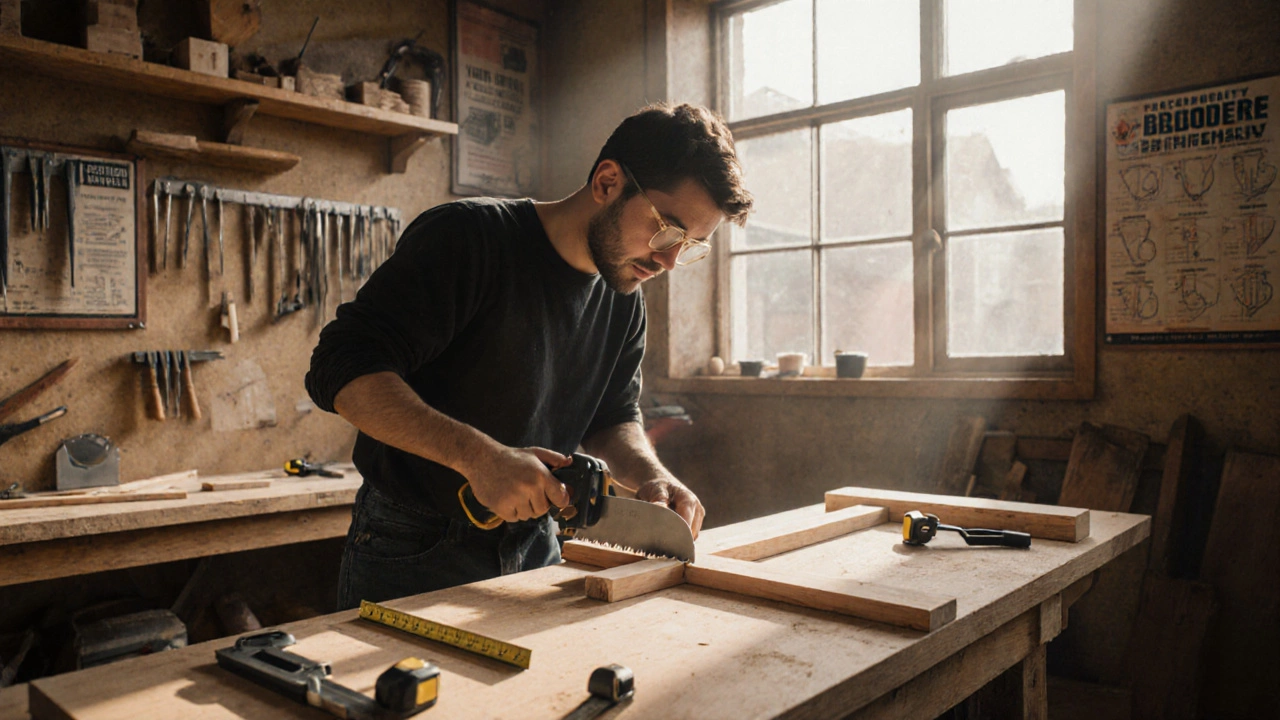Learn Carpentry: Skills, Tools, and Real-World Paths to Master the Trade
When you learn carpentry, the hands-on trade of cutting, shaping, and assembling wood to build structures and furniture. Also known as woodworking, it’s one of the oldest and most reliable skilled trades in the UK, with steady demand in housing, renovation, and custom build projects. This isn’t just about swinging a hammer—it’s about precision, problem-solving, and understanding how materials behave under pressure, weather, and time.
Most people think you need perfect math skills to be a carpenter, but the truth is simpler: you need carpentry math, practical arithmetic like fractions, angles, and basic geometry used daily on job sites. You’ll measure twice, cut once, using rulers, squares, and tape measures—not calculators. You’ll learn how to find 45-degree angles for crown molding, calculate roof pitches, or figure out how many studs fit in a 10-foot wall. These aren’t classroom problems—they’re real fixes you’ll make on a job, often while standing on a ladder with a sawdust-covered shirt.
Getting certified matters. Many employers in the UK look for NVQ carpentry, a nationally recognized qualification that proves you can do the job safely and correctly on site, not just on paper. Unlike a degree, an NVQ doesn’t test theory—it tests your actual work. You’ll be assessed while you build, install, or repair. That’s why people who learn carpentry through apprenticeships often move faster into paid work than those who only study in classrooms.
You don’t need to buy a workshop to start. Many beginners begin with basic tools: a hammer, tape measure, combination square, handsaw, and power drill. As you grow, you’ll add chisels, planes, and maybe a circular saw. But the real investment isn’t in tools—it’s in time. The best carpenters aren’t the ones with the flashiest gear. They’re the ones who’ve spent hundreds of hours practicing joints, reading blueprints, and fixing mistakes.
And yes, it’s hard. Some of the toughest tasks—like cutting dovetail joints or fitting mortise-and-tenon connections—can take weeks to master. But every pro started exactly where you are now: unsure, maybe a little clumsy, but willing to keep going. The trade doesn’t reward speed. It rewards patience, consistency, and attention to detail.
Whether you’re looking to switch careers, start a side hustle, or build your own home, learning carpentry opens real doors. You’ll find work in new housing, historic restorations, kitchen installations, or even custom furniture shops. And with skilled labor shortages still strong across the UK, your time and effort now will pay off for years.
Below, you’ll find clear guides on what carpentry really involves—from the math you need to the qualifications that get you hired. No fluff. No hype. Just what works.




